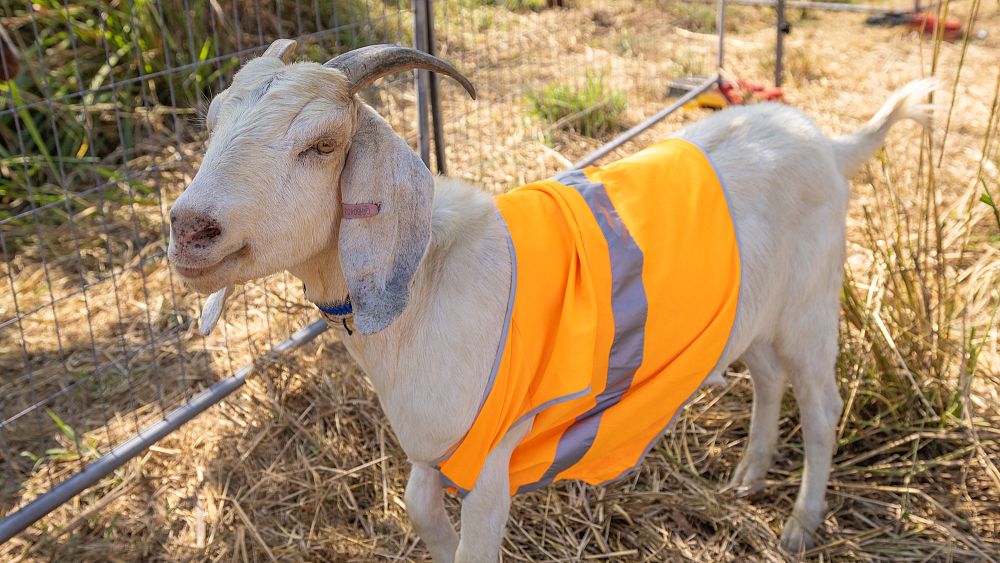The herd of weed-busting goats were deployed to tackle an area along railway tracks where vegetation was out of control.
A herd of goats could make a surprising member of an Australian rail company’s maintenance team.
Queensland Rail (QR) was looking for a quicker solution to clear weeds and weeds that posed a fire risk along lines near Tully in far north Queensland.
A group of 15 goats were brought here for a trial and given 8-12 weeks to clear “the most resistant weeds” in the overgrown area.
The animals proved to be diligent workers and particularly skilled in reaching inaccessible areas, so much so that they were able to receive further job offers.
Contenuti
ToggleGoats were used to clear overgrown railway lines in Australia
The destruction of weeds herd of goats was deployed to tackle an intermediate area railroad trails and Banyan Creek where vegetation was out of control.
The 15 animals proved to be a great success, nimbly leaping into hard-to-reach areas and gnawing through undergrowth in a third of the time allotted for the task.
“It’s been four weeks and they’ve wiped out the three different parts of that area,” QR vegetation manager Glenn Withers told Australian broadcaster ABC News.
Goats graze on fire-prone grasses
Clearance had become imperative after dry grass reaching two meters in height over an area of 0.02 square kilometers had become a forest fire risk.
In some areas, human workers had managed to replant with less flammable native species.
But the final 5,000 square metres, clogged with rainforest plants and wattles, were proving a challenge.
After discussions with landscape contractors Norveg, Withers decided to experiment goats.
“We just wanted to see what they would eat, what they wouldn’t eat and how quickly they would eat it,” he said.
Goat herds could be more environmentally friendly
In addition to being prolific workers, i herd of goats it could be a less harmful solution for the environment.
“Goats are a safe and environmentally friendly way to eliminate overgrowth without the use of heavy machinery or herbicides,” says Scott Cornish, QR regional manager.
“In addition to their extensive chewing experience, they are able to maneuver in the most difficult to reach places, climbing steep and rocky terrain with ease – places our heavy machinery simply cannot access.”
Animals graze not only on the plants themselves, but also on the seeds, thus preventing the regrowth of weeds and reducing the use of herbicides.
“This will help reduce future vegetation management costs by allowing local native rainforest trees and shrub seeds to germinate and gradually revegetate the entire one-acre area,” adds Cornish.
Keep goats safe
While the goats are proving useful, transitioning to a full-time job means ensuring the animals’ safety, which Norveg co-owner Christina Forrest told ABC News is “not easy.”
“They need to be kept safe, fed, watered and safe from predators,” he said.
QR has installed CCTV cameras and fencing to create a safe enclosure for the goats, well away from the railway corridor.
“This protects them both from predators and from escaping and wandering into nearby rail or road traffic,” says Cornish.
Although goats may not be the best maintenance solution in all of QR railway networkWithers has allocated a 0.2 square kilometer site in Townsville choked with leucaena, an invasive but goat-friendly weed.
“Who knows? With the fencing and the funding we could probably put them in some parts in the general rail corridor as well,” she said.
Image:Getty Images







